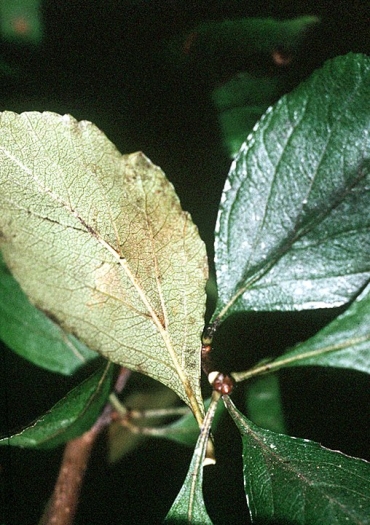Eastern Mayhaw
(Crataegus aestivalis)
Eastern Mayhaw (Crataegus aestivalis)
/
/

Robert H. Mohlenbrock.
Public domain



Estimated Native Range
Summary
The Eastern Mayhaw is valued for its ornamental flowers, wildlife habitat enhancement, and the unique, tart-flavored fruit it produces, which is used in the famous mayhaw jelly. It is often planted in wetland restoration projects, home gardens, and as a fruiting hedge. This species prefers moist, acidic soils and can tolerate temporary flooding, making it suitable for riparian plantings. It thrives in full sun to part shade and requires medium to high amounts of water with good drainage. While it is adaptable to various soil types, it does best in soils that are consistently moist. Gardeners should be aware that mayhaws can be susceptible to fire blight and rust diseases, and regular monitoring is recommended to manage these potential problems.CC BY-SA 4.0
Plant Description
- Plant Type: Shrub, Tree
- Height: 30-40 feet
- Width: 20-35 feet
- Growth Rate: Moderate
- Flower Color: White
- Flowering Season: Spring
- Leaf Retention: Deciduous
Growth Requirements
- Sun: Full Sun, Part Shade
- Water: Medium
- Drainage: Medium, Slow
Common Uses
Bee Garden, Bird Garden, Butterfly Garden, Drought Tolerant, Edible*Disclaimer: Easyscape's listed plant edibility is for informational use. Always verify the safety and proper identification of any plant before consumption., Erosion Control, Fragrant, Hummingbird Garden, Salt Tolerant, Showy Flowers
Natural Habitat
Wetland margins, swamps, and riverine forests in the Southeastern United States
Other Names
Common Names: Mayhaw , May Hawthorn , Apple Hawthorn
Scientific Names: Crataegus aestivalis , Crataegus elliptica , Crataegus aestivalis var. cerasoides , Crataegus luculenta , Crataegus fruticosa , Crataegus maloides , Crataegus cerasoides , Mespilus aestivalis , Crataegus aestivalis var. dormonae , Anthomeles aestivalis
GBIF Accepted Name: Crataegus aestivalis (Walter) Torr. & A.Gray